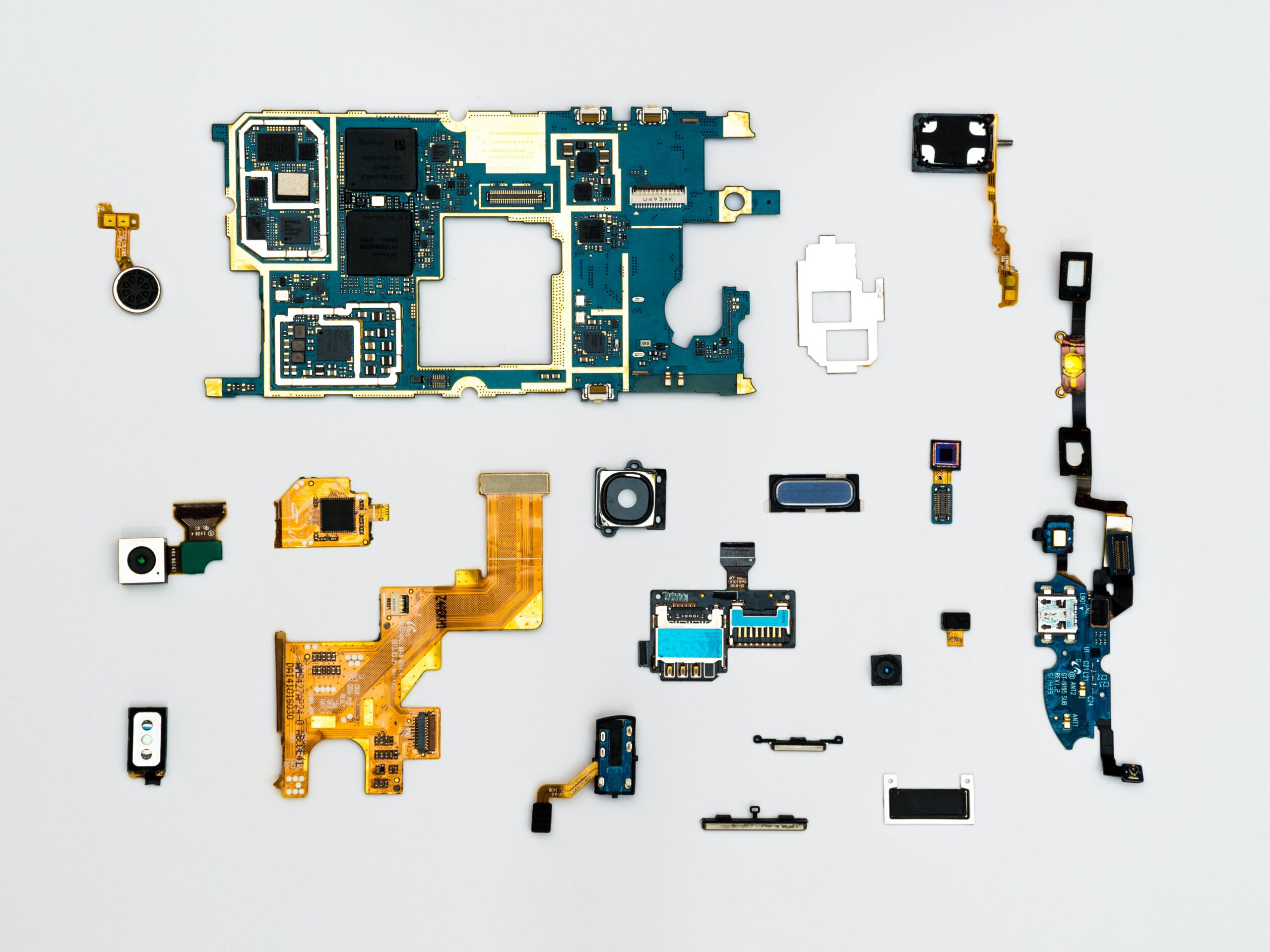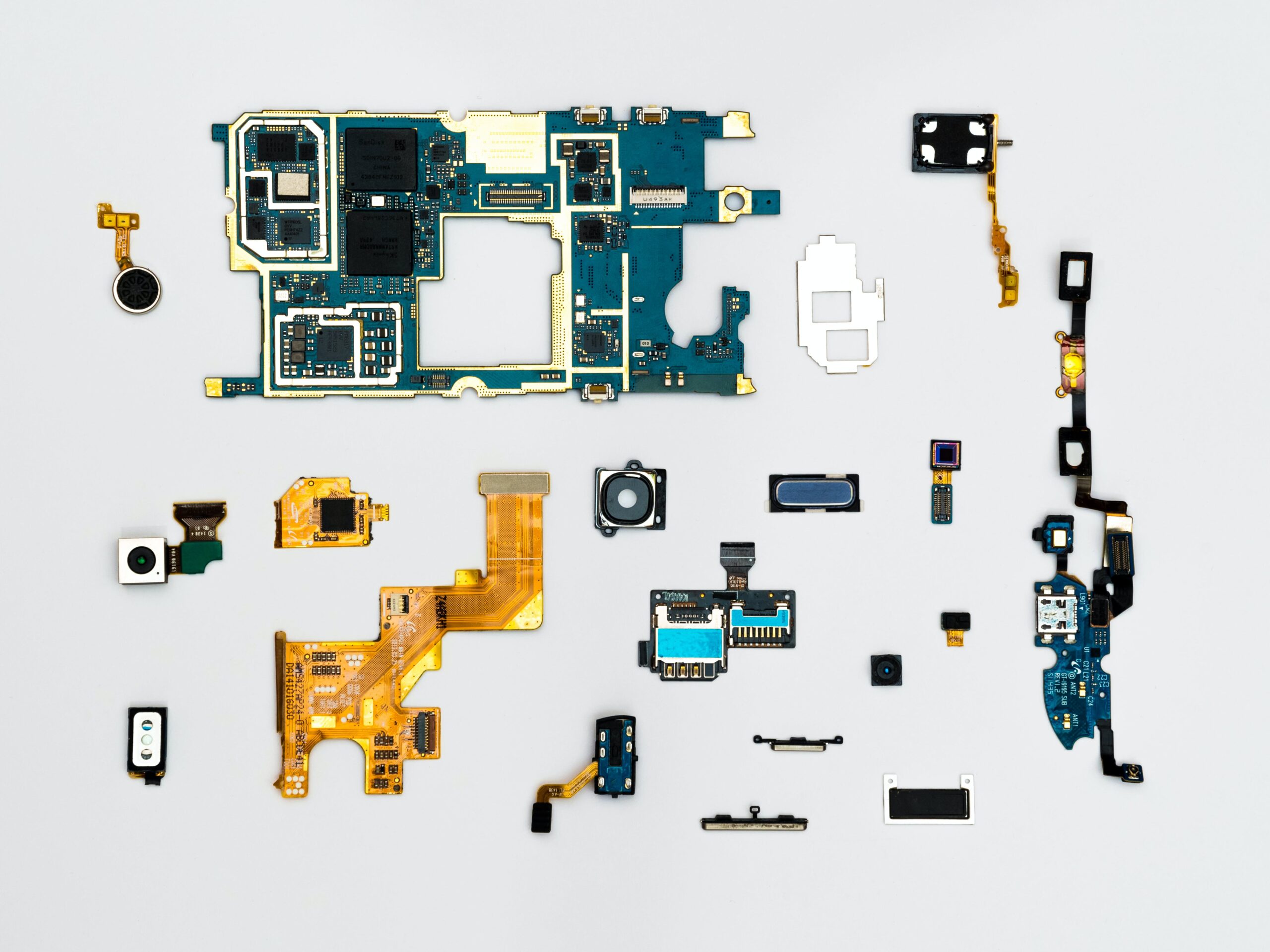Are you in need of some new skateboard hardware? Whether you’re a seasoned skateboarder or just starting out, having the right nuts, bolts, and other hardware is crucial for a smooth and safe ride. But with so many options to choose from, it can be overwhelming to find the best ones for your board. In this article, we’ll explore some top choices for skateboard hardware, taking into consideration factors like durability, ease of use, and compatibility. So, get ready to upgrade your skateboard with the perfect hardware that will elevate your riding experience to new heights.

Types of Nuts
Nylock Nuts
Nylock nuts, also known as nylon lock nuts, are a popular choice among skateboarders. These nuts have a nylon insert that prevents them from loosening due to vibrations or movements. The nylon insert creates friction against the bolt threads, keeping the nut securely in place. Nylock nuts are highly durable and resistant to corrosion, making them perfect for skateboarding in various conditions.
Flange Nuts
Flange nuts are identifiable by the wide flange, or washer, that is built into the nut. This flange serves two purposes: it distributes the load over a larger surface area and acts as a locking feature to prevent the nut from loosening. Flange nuts are commonly used in applications where a strong and secure joint is required, making them suitable for skateboard hardware.
Wing Nuts
Wing nuts are named for their distinctive wing-like extensions on the sides. These wings provide an easy grip for hand tightening and loosening, eliminating the need for tools. Wing nuts are convenient for quick adjustments or replacements on the go. However, they may not provide the same level of security as other nut types, and regular checking and tightening may be necessary.
Acorn Nuts
Acorn nuts, also called cap nuts or domed nuts, have a smooth, rounded top that resembles an acorn. These nuts are primarily used for aesthetic purposes, as they provide a clean and finished appearance to the hardware. While not specifically designed for skateboarding, acorn nuts can still be used as long as they are properly tightened and checked regularly to ensure the security of the hardware.
Castle Nuts
Castle nuts are characterized by their unique slots or notches on one end of the nut. These slots are designed to accommodate a cotter pin, which acts as a secondary locking mechanism. Castle nuts are commonly used in situations where it is crucial to prevent the nut from loosening, such as on axles or suspension systems. While castle nuts may not be the most commonly used nut type in skateboarding, they can still be a viable option for specific applications.
Types of Bolts
Phillips Head Bolts
Phillips head bolts feature a cross-shaped indentation on the head, requiring the use of a Phillips screwdriver. These bolts are one of the most common types used in skateboarding hardware due to their widespread availability. Phillips head bolts are easy to install and remove with the proper tool, making them a convenient choice for skateboarders.
Allen Head Bolts
Allen head bolts, also known as hex socket bolts, have a hexagonal indentation on the head. These bolts require the use of an Allen wrench or hex key for installation and removal. Allen head bolts provide a more secure grip compared to Phillips head bolts, reducing the risk of stripping the bolt head during tightening or loosening. Skateboarders who prefer extra stability and reliability often opt for Allen head bolts.
Button Head Bolts
Button head bolts have a low-profile, rounded head that sits flush with the surface when tightened. These bolts are commonly used in applications where a smooth and finished appearance is desired. Button head bolts may not be as prevalent in skateboarding as other bolt types, but they can still be suitable for skateboard hardware, especially when aesthetics are a priority.
Countersunk Bolts
Countersunk bolts, also called flat head bolts, have a flat, beveled head that sits flush with the surface when installed. These bolts are designed to create a smooth and level surface, eliminating any obstructions that could interfere with skateboard movement. Countersunk bolts are often used for attaching trucks or mounting hardware that needs to be flush with the skateboard deck.
Carriage Bolts
Carriage bolts feature a round head with a square shoulder directly underneath. These bolts are commonly used when a smooth and finished appearance is desired, as the square shoulder prevents the bolt from turning once installed. Skateboarders may choose carriage bolts when attaching hardware to their decks, especially if they want to avoid exposed threads.
Bolt Length
Standard Length
Standard bolt length refers to the length of the bolt’s threaded portion, excluding the head. For skateboard hardware, the standard bolt length is typically around 1 inch (25.4 mm). This length is suitable for most skateboard setups, providing enough thread engagement to secure the hardware without protruding excessively.
Longer Bolts for Risers
If you use riser pads between your trucks and skateboard deck, longer bolts will be necessary. Riser pads increase the distance between the deck and trucks, requiring longer bolts to ensure proper attachment. The exact length of the bolts will depend on the thickness of your riser pads. It is essential to choose bolts that are long enough to accommodate the additional height provided by the risers.
Shorter Bolts for Flush Mounting
When skateboarders prefer their trucks to be flush with the skateboard deck, shorter bolts are necessary. Flush mounting creates a lower profile, allowing for a more stable and responsive ride. Shorter bolts ensure that the trucks are properly attached without any excess bolt length protruding above the deck surface.
Nylon vs. Metal Locking Inserts
Benefits and Drawbacks of Nylon Locking Inserts
Nylon locking inserts offer several benefits for skateboard hardware. Firstly, they provide exceptional resistance to vibration and loosening. The nylon insert creates friction against the bolt threads, effectively locking the nut in place. This prevents the hardware from coming loose during skateboarding sessions, reducing the need for frequent tightening.
Additionally, nylon locking inserts are resistant to corrosion and can withstand various weather conditions. This is especially advantageous for skateboarders who ride in wet or humid environments where rusting could be a concern.
One potential drawback of nylon locking inserts is their durability. Over time, the nylon insert may wear down or lose its effectiveness, necessitating the replacement of the nut. However, with regular maintenance and inspection, this issue can be mitigated.
Benefits and Drawbacks of Metal Locking Inserts
Metal locking inserts, often made of stainless steel, offer a different set of advantages and drawbacks compared to nylon inserts. One advantage of metal inserts is their increased durability and longevity. Metal locking inserts are less prone to wear and tear, ensuring that the locking mechanism remains effective over an extended period.
Metal inserts also provide a higher level of security compared to nylon inserts. The metal-on-metal contact enhances the locking ability, making it more resistant to loosening caused by vibrations or movements during skateboarding.
On the other hand, one potential drawback of metal locking inserts is their susceptibility to corrosion, especially if they are exposed to moisture or harsh environments without proper maintenance. Regular inspection and cleaning are necessary to prevent rusting and maintain the effectiveness of metal locking inserts.
When choosing between nylon and metal locking inserts, skateboarders should consider their specific needs, preferences, and budget constraints. Both options have their advantages and drawbacks, so it is crucial to assess which features are most important for your skateboarding style and conditions.

Materials
Steel Hardware
Steel hardware is a common choice for skateboard hardware due to its strength and durability. Steel bolts and nuts can withstand the rigors of skateboarding, ensuring that your hardware remains securely in place. Steel is also relatively affordable, making it accessible for skateboarders on a budget. However, it is important to note that steel hardware may be more susceptible to rust and corrosion compared to other materials, especially if not properly maintained.
Aluminum Hardware
Aluminum hardware is another popular option for skateboarders. Aluminum offers a lightweight alternative without compromising strength. This can be beneficial for skateboarders looking to reduce overall weight without sacrificing performance. Aluminum hardware is also less prone to rust and corrosion, making it suitable for skateboarders who often ride in wet or humid environments. However, it is important to note that aluminum hardware may not be as durable as steel, and regular inspection is essential to detect any signs of wear or damage.
Titanium Hardware
For skateboarders looking for the ultimate combination of strength and lightness, titanium hardware is an excellent choice. Titanium offers the same strength as steel but with a significantly lower weight. This can contribute to a more responsive and agile skateboard setup. Additionally, titanium is highly resistant to rust and corrosion, ensuring the longevity of your hardware. However, it is crucial to consider the cost implications of titanium hardware, as it tends to be more expensive than steel or aluminum options.
When choosing the material for your skateboard hardware, consider your specific needs, preferences, and budget. Each material offers unique advantages and drawbacks, so it is essential to find the right balance that suits your skateboarding style.
Griptape Screws
Types of Griptape Screws
Griptape screws, also known as hardware screws, are specifically designed to secure griptape to the skateboard deck. These screws are available in various types, including Phillips head, Allen head, and Torx head screws. Phillips head screws are the most common type, easily recognizable by their cross-shaped indentation on the head.
Allen head screws require the use of an Allen wrench or hex key for installation and removal. These screws offer a more secure grip during tightening and loosening, reducing the risk of stripping the screw head.
Torx head screws, also called star drive screws, feature a six-pointed star-shaped indentation on the head. This design provides improved torque transfer, reducing the chance of the tool slipping during installation or removal.
While the choice of griptape screws might seem insignificant, it is important to select the type that suits your preferences and tools available. Whether you prefer the convenience of Phillips head, the stability of Allen head, or the improved torque transfer of Torx head, the right choice can ensure a secure grip on your skateboard deck.
Best Length for Griptape Screws
The best length for griptape screws depends on the thickness of your skateboard deck, griptape, and any additional riser pads or shock pads used. In general, 1 inch (25.4 mm) screws are the standard length for attaching griptape to the deck. However, if you have a thicker deck or use riser pads, longer screws may be necessary to ensure proper attachment.
It is important to choose screws that are long enough to securely fasten the griptape without protruding excessively. If the screws are too short, they may not provide enough thread engagement, compromising the grip’s stability. Conversely, if the screws are too long, they may protrude above the deck surface, causing discomfort or even injury during skateboarding.
Before purchasing griptape screws, consider the thickness of your setup and consult with a skateboard expert or reference the skateboard manufacturer’s recommendations to ensure you select the appropriate length for your specific set-up.
Importance of Quality Griptape Screws
While griptape screws may appear to be a small and insignificant component of skateboard hardware, their quality and durability are crucial for maintaining a secure grip on the skateboard deck. High-quality griptape screws ensure that the griptape remains firmly attached, reducing the risk of bubbles or peeling that can affect skateboard performance.
Quality griptape screws are made from durable materials, such as stainless steel, that are resistant to rust and corrosion. This is especially important for skateboarders who ride in wet or humid conditions, as exposure to moisture can compromise the screws’ integrity over time.
Furthermore, high-quality griptape screws have well-designed heads that maintain their shape and resist stripping during repeated installation and removal. This ensures that you can easily adjust or replace your griptape as needed without worrying about damaged or stripped screws.
Investing in quality griptape screws may require a slightly higher initial cost, but their superior durability and performance will save you time, effort, and money in the long run. Properly securing your griptape with reliable screws contributes to a more comfortable and confident skateboarding experience.

Recommended Brands
Independent
Independent is a well-established and highly regarded brand in the skateboarding industry. They offer a wide range of skateboard hardware, including nuts, bolts, and griptape screws. Independent hardware is known for its durability and reliability, ensuring that your skateboard remains securely assembled during intense skateboarding sessions.
Bones
Bones is another trusted brand that skateboarders turn to for their hardware needs. Bones offers a variety of nuts, bolts, and griptape screws that are designed to withstand the demands of skateboarding. The brand’s commitment to quality and performance has earned them a solid reputation among skateboarders worldwide.
Thunder
Thunder is known for its high-quality skateboard trucks, but the brand also offers a selection of skateboard hardware, including nuts, bolts, and griptape screws. Thunder hardware is designed to provide exceptional strength and security, complementing their renowned trucks to create a complete and reliable skateboard setup.
Tensor
Tensor is a brand that focuses on innovation and performance. While they are best known for their lightweight and responsive skateboard trucks, Tensor also offers hardware designed to meet the demands of skateboarding. Their nuts, bolts, and griptape screws are crafted with precision and durability in mind, ensuring optimal performance and security.
Spitfire
Spitfire is a brand that specializes in wheels, but they also offer skateboard hardware to complete your setup. Spitfire hardware is designed to deliver strength and reliability, so you can skate with confidence. From nuts and bolts to griptape screws, Spitfire offers a range of hardware options that cater to different skateboarding preferences.
When choosing skateboard hardware, considering reputable brands such as Independent, Bones, Thunder, Tensor, and Spitfire can give you peace of mind knowing that you are investing in quality components that have been trusted and endorsed by skateboarders worldwide.
Maintenance Tips
Tightening Hardware Regularly
Skateboarding can put a lot of strain on your hardware, causing bolts and nuts to loosen over time. To ensure optimal performance and safety, it is essential to regularly check and tighten your skateboard hardware. This includes the nuts and bolts securing your trucks, wheels, and griptape.
It is recommended to check your hardware before each skate session, focusing on areas that are prone to loosening or experiencing heavy impact. For example, make sure your trucks are securely attached to the deck and that your wheels are properly fastened to the trucks. A quick inspection and tightening before each session can prevent accidents and maintain the stability of your skateboard setup.
Inspecting and Replacing Worn-out Hardware
Regular inspection of your skateboard hardware is crucial for identifying signs of wear or damage. Bolts, nuts, and griptape screws can deteriorate over time due to the repetitive impacts and stresses experienced during skateboarding.
Inspect the threads of your hardware regularly to ensure they are free from damage or excessive wear. If you notice any stripped threads, rust, or signs of weakness, it is crucial to replace the affected hardware promptly. Riding with compromised or worn-out hardware can pose a risk of hardware failure, leading to accidents or detrimental effects on your skateboarding experience.
Proper Cleaning and Lubrication
Clean and lubricated hardware contributes to better performance and longevity. Skateboarding exposes your hardware to dirt, dust, moisture, and other elements that can affect its functionality. Regularly cleaning your hardware with a mild detergent and water can help remove dirt and grime that may hinder its performance.
After cleaning, lubricating your hardware can enhance its movement and reduce friction. Apply a small amount of skateboard-specific lubricant, such as bearing oil or graphite, to the threads and moving parts of your hardware. This will promote smoother rotations, easier adjustments, and reduce the risk of rust or corrosion.
Remember to wipe off any excess lubricant and avoid over-lubricating, as this can attract more dirt and debris, leading to potential issues with your hardware.
Avoiding Over-tightening
While regularly tightening your skateboard hardware is essential, it is equally important to avoid over-tightening. Over-tightening can lead to stripped threads, damaging your hardware and making future adjustments or replacements challenging.
When tightening your hardware, use the appropriate tool, whether it’s a wrench, screwdriver, or Allen key, and apply sufficient pressure to secure the hardware without excessive force. If you encounter resistance during tightening, stop and assess the situation to prevent any potential damage.
Additionally, be mindful of the torque you apply when tightening your hardware. Applying too much force can cause the deck to deform or crack, compromising its structural integrity.
By striking the right balance between tightness and avoiding excessive force, you can ensure the longevity and proper functioning of your skateboard hardware.
Skateboarding Communities’ Preferences
Favorite Types of Nuts
The skateboarding community has diverse preferences when it comes to nuts. Nylock nuts are favored by many skateboarders for their reliability and resistance to loosening. The nylon insert in these nuts provides added security, minimizing the need for constant tightening during skate sessions.
Flange nuts are also commonly used, as their built-in washer distributes the load, creating a more secure and stable connection. The wider surface area contributes to better weight distribution, reducing the risk of hardware failure.
While not as prevalent, wing nuts are often favored for their convenience in quick adjustments or replacements on the go. Their hand-tightening capability eliminates the need for tools, providing skateboarders with added convenience and flexibility.
Popular Choices for Bolts
When it comes to bolts, skateboarders have varying preferences based on their desired performance and aesthetic goals. Phillips head bolts are highly popular due to their widespread availability, ease of use, and affordability. They are the go-to choice for many skateboarders who prioritize simplicity and accessibility.
For those seeking increased security and reliability, Allen head bolts are a popular option. The hexagonal indentation provides a more secure grip, reducing the likelihood of stripped bolt heads during tightening or loosening.
Countersunk bolts are often chosen by skateboarders who prioritize a smooth and flush surface. The flush mounting reduces any potential obstructions, ensuring a sleek and clean appearance.
Preferred Materials
Skateboarders’ preferences for hardware materials are influenced by factors such as performance, weight, durability, and cost. Steel hardware, known for its strength and affordability, remains a popular choice. It offers reliability and durability, providing skateboarders with a secure setup.
Aluminum hardware is favored by skateboarders who prioritize weight reduction without sacrificing performance. The lightweight nature of aluminum contributes to a more responsive skateboard setup.
For those seeking the ultimate combination of strength and lightness, titanium hardware is often considered. Although titanium is more expensive than steel or aluminum, its unmatched strength-to-weight ratio can enhance skateboarding performance.
Ultimately, the choice of material often depends on personal preferences, budget considerations, and the specific needs of skateboarders. Each material has its own merits and drawbacks, encouraging skateboarders to strike a balance that aligns with their skateboarding style and requirements.
Final Thoughts
When it comes to skateboard hardware, considering the types of nuts, bolts, and their respective materials is essential for optimizing performance and safety. Each type of nut and bolt offers unique advantages and considerations, catering to the diverse needs and preferences of skateboarders.
Regular maintenance, including checking and tightening hardware, inspecting for wear or damage, proper cleaning and lubrication, and avoiding over-tightening, is crucial for ensuring the longevity and functionality of skateboard hardware. Additionally, choosing reliable brands offers peace of mind, knowing that you are investing in quality components trusted by skateboarders worldwide.
By understanding the various options available and considering the preferences of skateboarding communities, you can make informed decisions when selecting skateboard hardware that suits your specific needs, riding style, and budget. Whether you prioritize reliability, lightweight materials, or sleek aesthetics, there are hardware options available to enhance your skateboarding experience.

